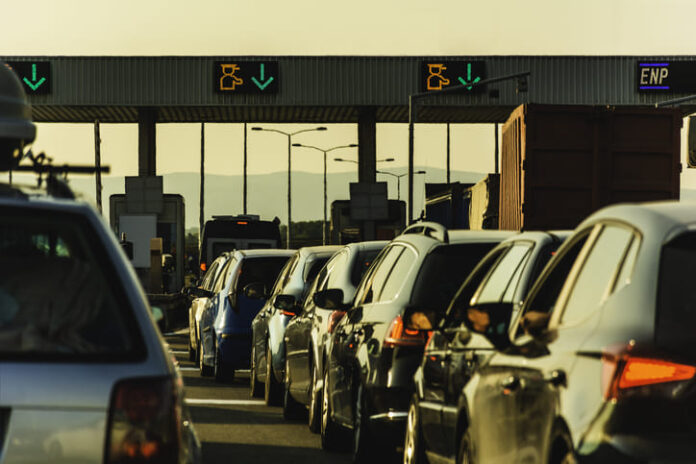Traffic congestion is a persistent issue in urban areas worldwide, leading to increased travel times, higher pollution levels, and economic inefficiencies. To address this, many cities have implemented congestion pricing—a strategy that charges drivers a fee for using certain roads during peak traffic times. This approach aims to manage demand, reduce congestion, and promote alternative transportation methods. However, like any policy, congestion pricing has its pros and cons.
What Is Congestion Pricing?
Congestion pricing is a system where drivers pay a fee to access specific roads or zones during busy periods. The goal is to discourage unnecessary trips during peak hours, thereby reducing traffic volume and improving overall road efficiency. Fees can vary based on time of day, vehicle type, and congestion levels, encouraging drivers to consider alternative routes, travel times, or modes of transportation.
Benefits of Congestion Pricing
-
Reduced Traffic Congestion
By imposing fees during peak times, congestion pricing encourages drivers to alter their travel habits, leading to decreased traffic volumes and smoother road conditions. This reduction in congestion can result in shorter travel times and less stress for commuters.
-
Environmental Improvements
Fewer vehicles on the road mean lower emissions of greenhouse gases and pollutants. This contributes to better air quality and supports environmental sustainability efforts.
-
Revenue Generation for Public Transportation
Funds collected from congestion pricing can be reinvested into public transportation systems, enhancing services and infrastructure. Improved public transit options can provide viable alternatives to driving, further reducing road congestion.
-
Encouragement of Alternative Transportation
The additional cost of driving during peak times motivates individuals to consider carpooling, cycling, walking, or using public transit, promoting healthier and more sustainable transportation habits.
-
Economic Efficiency
By managing demand through pricing, roads are used more efficiently, reducing the economic costs associated with traffic delays and fuel consumption.
Drawbacks of Congestion Pricing
-
Equity Concerns
Critics argue that congestion pricing can disproportionately affect low-income individuals who may not have flexible work hours or access to alternative transportation options. Without proper measures, such as exemptions or subsidies, this policy could exacerbate social inequalities.
-
Implementation Costs
Establishing a congestion pricing system requires significant investment in infrastructure, technology, and administration. These upfront costs can be substantial and may take time to offset through collected fees.
-
Potential for Traffic Diversion
Drivers seeking to avoid fees might divert to alternative routes, potentially shifting congestion to other areas not designed to handle increased traffic volumes.
-
Public Resistance
Introducing new fees can be unpopular, leading to public resistance and political challenges. Effective communication and stakeholder engagement are crucial to gain public support.
-
Impact on Businesses
Businesses within congestion zones might experience reduced customer traffic if potential patrons are deterred by additional driving costs. This could affect local economies, especially small businesses.
Transportation engineers emphasize the importance of designing congestion pricing systems that are equitable and efficient. Integrating Transportation engineering services in cities such as Houston, Austin, Dallas, San Antonio, Jacksonville, Orlando, Tampa, and Miami can help tailor solutions to specific urban contexts. This approach ensures that the benefits of reduced congestion and improved air quality are realized while addressing the unique transportation needs of these diverse and rapidly growing urban areas, without disproportionately impacting vulnerable populations.
Balancing the Pros and Cons
To maximize the benefits of congestion pricing while mitigating its drawbacks, policymakers can consider the following strategies:
- Implementing Tiered Pricing Structures: Offering variable pricing based on vehicle type, time of day, and congestion levels can provide flexibility and fairness.
- Providing Exemptions or Discounts: Offering reduced rates or exemptions for low-income drivers, essential services, and residents within the congestion zone can address equity concerns.
- Investing in Public Transportation: Reinvesting revenue into public transit improvements ensures that viable alternatives to driving are available and attractive.
- Conducting Public Outreach: Engaging with the community through education and consultation can build public support and address concerns.
- Monitoring and Adjusting the System: Regularly assessing the system’s impact allows for adjustments to pricing, coverage areas, and exemptions to better meet policy goals.
Conclusion
Congestion pricing presents a viable solution to urban traffic challenges, offering benefits such as reduced congestion, environmental improvements, and funding for public transportation. However, it also poses challenges, including equity concerns and implementation costs. By carefully designing and managing these systems, cities can harness the advantages of congestion pricing while addressing its potential drawbacks, leading to more efficient and sustainable urban transportation networks.
Frequently Asked Questions
What are the advantages and disadvantages of congestion charging?
Advantages include reduced traffic congestion, environmental benefits, and revenue generation for public transportation. Disadvantages encompass equity concerns, implementation costs, and potential traffic diversion to other areas.
What are the disadvantages of congestion?
Traffic congestion leads to longer travel times, increased fuel consumption, higher pollution levels, and economic inefficiencies due to delays and unpredictability.
What is meant by congestion pricing?
Congestion pricing is a strategy that charges drivers a fee for using certain roads during peak traffic times, aiming to reduce congestion and encourage alternative transportation methods.
What are the benefits of reducing congestion?
Reducing congestion results in shorter travel times, lower vehicle emissions, improved air quality, enhanced economic efficiency, and a better quality of life for urban residents.




































